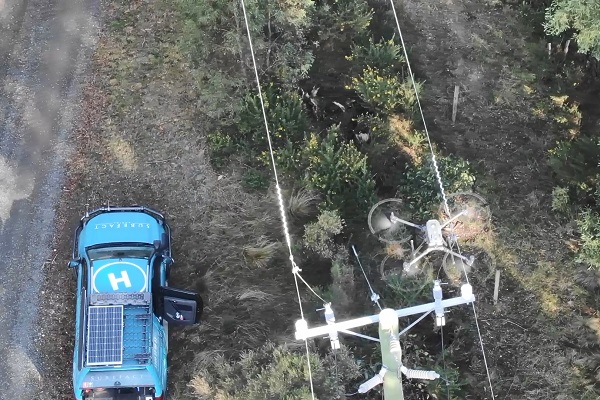It’s a bird, it’s a plane… no, it’s a powerline inspection
Powercor has been trialling a different way to inspect its powerlines and assets recently – drones. Sean Carroll finds out how it’s done.
Powercor Australia has used the regional Victorian city of Ballarat to test its new drone technology for inspecting electrical powerlines much more efficiently.
ADVERTISEMENT
The company currently moves electricity to and from more than 843,000 homes and businesses across the western suburbs of Melbourne and through central and western Victoria to the South Australian and New South Wales borders.
Its network is made up of almost 90,000km of wires and more than 588,000 poles and associated infrastructure. It supports 11,200 medium, commercial and industrial businesses and 106,500 small businesses.
With so much land mass to cover, inspecting the powerlines for faults or near faults is an almost impossible job. Using drones can help the company inspect a larger range in a shorter time.
“The drone inspections cover a large area, quickly, with high-definition cameras used to capture the condition of powerlines quickly and easily,” Powercor head of network asset management John Mifsud says.
“The area south of Ballarat was chosen due to its topography and environmental factors, as well as network characteristics that make the location a good trial site.
“Remotely piloted drones have successfully inspected more than 30km of powerlines around Ross Creek, Cambrian Hill, Napoleons and parts of Buninyong in recent weeks.”
The drones being used are Matrice 300 RTK and the units can reach up to speeds of 83km/h while operating at a maximum height of 5,000m or 4m above powerlines. It also boasts an advanced flight controller system, six-directional sensing, real-time video transmission, thermal imaging and obstacle-detection systems.
The drone work is in addition to Powercor’s ongoing continuous program of asset inspections, which are also being conducted by crews in vehicles, on foot and by helicopter.
Powercor needs the flexibility these drones provide given just how big the network is. The program aims to inspect and maintain the powerlines while also managing any vegetation that may be impairing the lines, clearing trees and shrubs.
“Powercor is working with drone operators to optimise the drone’s settings and usage for scanning electricity networks,” John says.
“While these drones won’t replace our existing inspection methods, we’re looking at whether they have a permanent role in our program in the future.”
The trial comes after a successful similar project in the Otways in September 2020. The Otway project spanned over a much smaller but heavily vegetated 216km range and inspectors worked partly with drones and partly without.
John adds that the current Ballarat trial is about finding new ways to keep the network operating safely and reliably: “We’ll assess the outcomes and look to conduct more trials in the future to determine whether they have a permanent role in our program.”
-
ADVERTISEMENT
-
ADVERTISEMENT


